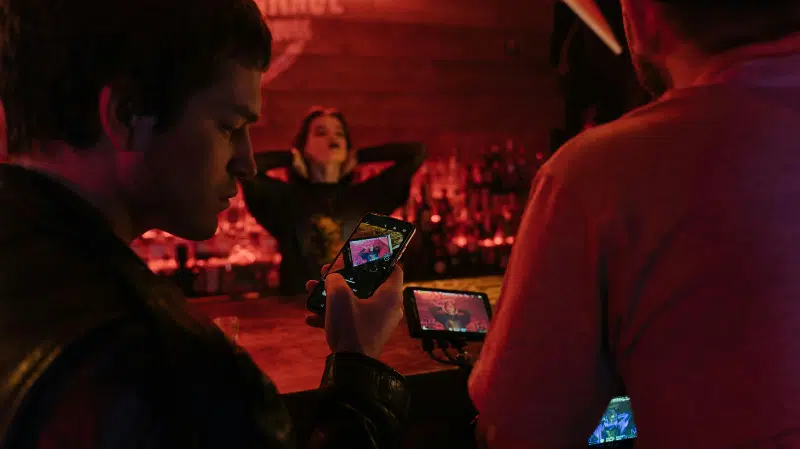One song, video, or photoshoot can fuel months of momentum if you know how to finesse it properly. That is the beauty of an evergreen content strategy. Evergreen content isn’t tied to one specific moment. It’s flexible, reusable, easy to reshare, and lasts the test of time. In this post, you’ll learn how to turn one release into an ongoing stream of valuable content without burning out or wasting valuable energy. From repurposing visuals to pacing your rollout just right, here’s how to squeeze every last drop of value from your latest release…
How To Turn One Release Into an Evergreen Content Strategy
Repurposing the Core Assets
No need to start from scratch, take a good look at what you’ve already got. A single song release comes with way more material than you realize. Music videos, cover art, press photos, lyrics, behind-the-scenes footage, even voice memos and demo clips. All of this can be repurposed into new formats to stretch your content way beyond release day, week, or month, for that matter.
Consider turning a video snippet into a Reel or TikTok. Use a still from your last shoot as an IG post, or break your lyrics down into multiple shareable graphics or story slides. That one photoshoot can easily become three months’ worth of visuals if you plan it right.
The key is to treat each asset like raw material. With some simple editing and format swapping, you can create tons of unique posts from the same core pieces.
⚡️ To help you get the creative wheels turning, check out “8 Types of Repurposed Content You Can Create From Your Music Videos” to learn more…
Go Behind-The-Scenes
Yeah, we all love seeing the pretty final product, but you know what fans really love? Seeing how it all came together. Behind-the-scenes content builds connection, shows off your personality, and pulls back the curtain into your world. This can mean anything from a quick phone video from shoot day, a selfie in the studio, or a candid moment from rehearsal. No need to overthink it. What may feel ordinary to you can be fascinating to your audience.
If you want to go deeper, post a BTS video with a VoiceOver explaining the concept or inspiration behind the song, or share a story of a messy moment during filming. Moments like these are real, and real is what sticks.
Consider even stretching the same BTS clip across platforms, i.e., post it on TikTok, turn it into a Reel with captions, or repurpose it into a short teaser clip to build hype on socials before the song comes out. The goal here is to metaphorically let your audience into the room with you and turn casual listeners into real fans via one core video, reframed many different ways.
Once you’ve shared the behind-the-scenes content, keep the momentum going by sparking conversation around it. Don’t just post; invite interaction. Ask your fans to guess what inspired a certain scene, share their favorite lyric, or weigh in on upcoming visuals. Simple questions like “What’s your favorite line from the song?” or “Drop a 🎧 if this has been stuck in your head” turn passive viewers into active participants. You can even use their replies in future content. (Think stitched reactions, pinned comments, or UGC reposts.)
How To Be Strategic with Formats
To clarify, it’s not just about reposting the same stuff over and over; it’s about carefully tailoring your content to each platform and its audience. For example, we all know that TikTok thrives on short, raw, and fun videos that grab attention fast. Instagram loves polished visuals and interactive Stories that let you engage directly with fans. Emails are more personal and allow you to tell a deeper story or share exclusive updates.
Understanding these differences can help you reshape one piece of content to fit where it’s going so it doesn’t feel like the same post repeated everywhere, but like fresh, native content that makes sense. For example, you can keep things fresh by trying methods like:
- Take a key lyric from your new song and turn it into an inspirational quote graphic for Instagram, then later use that same graphic in an email header or as a pinned Tweet.
- Use a single behind-the-scenes video clip to create multiple TikToks: one showing the filming setup, another zooming in on your reaction, and a third using a trending sound to give it new life.
- Slice up your music video into 15-second highlight reels for Instagram Stories, while also compiling a longer cut with extra footage for YouTube Shorts or a fan-exclusive email.
- Repurpose fan testimonials or early reviews as text overlays on short clips for Instagram and TikTok, and later collect them into a dedicated testimonial post or newsletter section.
All of these are different takes from the same OG content. With a little creativity, you can keep your audience engaged without needing to stress about constantly creating from scratch. That’s the magic of evergreen content. 🌱
——
📚 Check these out…
What Makes a Smart Music Release Strategy in 2025?
How to Influence Algorithms & Leverage DSP Tools to Grow Your Audience
What is a Lyric Sheet & When Do I Need One?
How to Protect Your Mental Health on Social Media as an Artist
——
Building a Content Flow That Lasts
Instead of dropping everything at once, it’s important to spread your content out over weeks/months. A planned content flow helps maintain buzz, keep fans engaged, and gives you space to create without burning out. To do this properly, you need to use a content calendar to map key posts, emails, and social shares around moments like release dates, shows, etc., turning that one release into an ongoing story.
For example, your content calendar might look like this:
- Week 1: Release announcement & music video premiere
- Week 2: Behind-the-scenes clip & lyric graphic
- Week 3: Fan testimonials & Instagram Stories Q&A
- Week 4: Remix or alternate version teaser & email update
- Week 5: Live performance snippet & TikTok challenge launch
By pacing your content intentionally, you keep the momentum alive and make the most of every asset you’ve created. // Whenever you’re ready to learn how to create the perfect content calendar for you, check out this post.
💡 PRO TIP: As you go along, you can add new ideas, brainstorm, and change your content schedule to accommodate whatever you need to improve. Want to switch up your end goal? No problem. Got some new content ideas? Add it to the calendar! Having a content calendar not only keeps you on track but will also help you see what you’ve already done all in one place. With everything right in front of you, coming up with new ideas and managing your content is easier than ever.
Tools To Streamline Your Efforts
Having a great plan is really half the battle. Using the right tools can make the whole process way easier to keep track of and more efficient to manage. Even something as simple as a spreadsheet on Google Sheets or Excel can go a long way. Use it to map out your posting schedule, track what you’ve already shared, and note ideas as they come.
Scheduling platforms like Later and Buffer let you plan and queue posts across multiple social channels in advance. Later’s visual calendar is great for Instagram, while Buffer makes multi-platform posting simple. With these tools, you can batch your content creation so you’re not scrambling on release day.
Templates are great for graphics, stories, and emails to keep everything looking consistent and save you hours of design work. Canva is a favorite of mine, with its drag-and-drop interface and ready-made templates, making lyric graphics, IG Stories, or even newsletter headers a breeze.
In addition, brand kits like Canva Pro’s Brand Kit or Adobe Express can help you lock in your fonts, colors, and logos across every post. All of this helps keep your branding tight, builds recognition, and makes all your content feel polished, no matter how often you reuse it.
Tools like these let the system work for you, keeping the momentum of your release going strong for however long you need it to. (No stress necessary.)
To wrap things up…
No need to reinvent the wheel every time you drop a new track. With the right strategy, one release can do some major heavy lifting for months. It just depends on how creative you can be with re-framing it. When you treat each piece of content like a building block and not a one-and-done post, you can create a working strategy that utilizes every angle (from visuals and stories to lyrics and reactions) and stretches it across platforms.
And once you become more seasoned with this process, you can grow with it through every release. Take note of what is working and what isn’t, then you can streamline your efforts for the next release. In the meantime, good luck…
Make every clip count!



